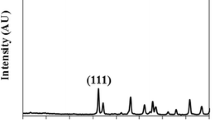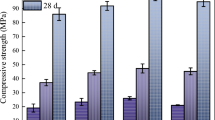Abstract
A new PVC-Chlorella composite material (PCCM) was investigated aiming at the effective utilization of biological CO2 fixing Chlorella. The microalga Chlorella, after fixing CO2, was molded with PVC. Molding conditions of PCCM, and physical properties of Chlorella were studied using tensile strength as an index for estimating the properties of PCCM. The optimum parameters for molding of PCCM were as follows: temperature = 180°C, pressure = 4.4 MPa and time = 5 min. The following physical parameters of Chlorella best enhance high tensile strength: water content of 2%, average particle size of 30–80 μm and a relatively homogeneous distribution of particle size. Chlorella, maintaining its original shape, exists in PCCM as an empty ball inlaid in the matrix of PVC. The PCCM shows a lower elongation and is more brittle than PVC, possibly as a result of gas and residual PVC primary particles around Chlorella grains. A comparison between theoretical and experimental results show that there is an effective combination between the PVC matrix and the Chlorella surface in PCCM. PCCM has a tensile strength higher than 30 MPa which meets the requirements for rigid PVC products, if Chlorella content is less than 20%. Chlorella can thus be effectively utilized as a practical filler.
Similar content being viewed by others
References
M. Ikenouchi, in Proceedings of Laboratory & Project Reports in the Meeting Commemorating the Fifth Anniversary of RITE Establishment, 1995, p. 17.
K. Fujisue, Industry and Environment 7 (1993) 29.
Y. Takechi, in “Fundamentals and Applications of Chlorella” (Gakushu Kenkyusha, Tokyo, 1973) p. 25.
Z. Li, M. Yamashita, H. Kabeya, T. Otsuki and J. Hosokawa, Reports of the Shikoku National Industrial Research Institute 1 (1996) 1.
A. Khanolkar and S. Shivkumar, in Soc. Plast. Eng. Annu. Tech. Conf., Vol. 53, No. 2, 1995, p. 2120.
Japan Standard Society, Testing method for tensile properties of plastics, JIS K7113-1995, 1995, p. 1.
Kinki Kagaku Kyokai Biniru Bukai, in “Fundamentals and Applications of PVC” (Nikkan Kogyo Shinbunsha, Tokyo, 1988) p. 229.
N. B. Neiman, in “Aging and Stabilization of Polymers” (Consultant Bureau, New York, 1965) p. 30.
D. E. Winkler, J. Polymer Sci. 35 (1959) 3.
Japan Standard Society, Plasticized polyvinyl chloride compounds, JIS K6723-1995, 1995, p. 2.
Japan Standard Society, Designation of rigid polyvinyl chloride compounds, JIS K6740-1976, 1976, p. 1.
Author information
Authors and Affiliations
Rights and permissions
About this article
Cite this article
Zhang, F., Kabeya, H., Kitagawa, R. et al. An exploratory research of PVC-Chlorella composite material (PCCM) as effective utilization of Chlorella biologically fixing CO2. Journal of Materials Science 35, 2603–2609 (2000). https://doi.org/10.1023/A:1004779415778
Issue Date:
DOI: https://doi.org/10.1023/A:1004779415778




